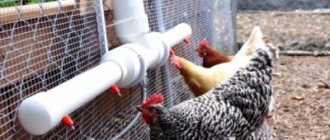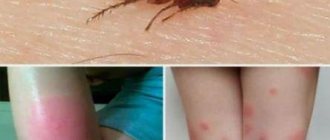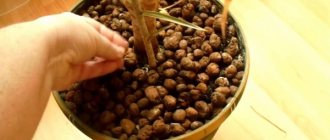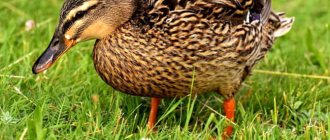Despite the emergence of a mass of means and methods aimed at exterminating rodents in the house, a considerable number of ordinary people prefer to use effective and time-tested methods, for example, a device for catching mice, traditionally called a mousetrap.
To catch small rodents, it is important to know: how to properly load a mousetrap, choose the appropriate bait and place to install the trap. Devices of equal efficiency can be purchased at specialized retail outlets or made with your own hands.
Types of bait
What food is best to use as bait at home, what do these rodents like? We are taught from childhood that mice and rats prefer cheese. In fact, most rodents are indifferent to cheese.
How to lure them into a trap?
- Salo. Choose flavorful pieces of smoked or salted lard. Old, rancid pieces will not attract mice. To make the treat more appetizing, before putting it in the mousetrap, “fry” it a little with a match.
- Vegetable oil. Any kind will do, but the best is unrefined sunflower. They need to anoint a piece of bread. If you have sesame oil in your house, that is also suitable, the smell is very attractive to rodents.
- Bread and pastries. It's good if it's bran bread with a strong smell. Choose fresh and fragrant baked goods.
- Grains. Mice and rats are not indifferent to seeds and cereals. You can pour seeds, wheat, buckwheat or rice into the trap.
- Smoked sausage. Its aroma may attract rodents, but they prefer natural products.
Small cute animals only look harmless and fragile, but in fact, the presence of mice in the house means a lot of trouble. They carry potentially dangerous diseases for humans, destroy food supplies, damage furniture and books, and are also so small that they can penetrate holes no more than six to seven millimeters wide. Catching mice usually involves setting traps in areas where animals move, but you can get rid of annoying guests without the use of special equipment.
Cleanliness is the enemy of the rodent
By keeping the house clean and following the recommendations, you can create conditions that become unbearable for mice to live in and they quickly retreat back home.
- Periodic general cleaning will help to avoid the accumulation of garbage, leftover food in corners, table drawers and other inaccessible places, and therefore rodents will not have the opportunity to profit from anything.
- Products are stored in tightly sealed jars or metal containers with a heavy lid.
- Household and kitchen waste is collected in buckets with lids and removed from the apartment in a timely manner.
- Install grilles on ventilation ducts, seal holes in the floor and baseboards.
How to assemble a wooden mousetrap
The simplest type of device, but highly effective, is called wooden mousetraps. They are easy to install and assemble, and the results obtained will break all records. You can make a trap called “mink” yourself.
This type of device will help you quickly get rid of any number of parasites.
The algorithm for assembling a wooden device is as follows:
First you need to prepare a wooden beam, the sides have the following values: 120 by 40 by 90. For ease of work, the workpiece must be sanded in advance using sandpaper. Next, three indentations should be made in the narrow side of the block, the size of which corresponds to the size of the rodent’s body. This can be done in convenient ways, for example, using a drill. Inside the device you need to place a noose made of strong but elastic thread or wire. The noose should be secured with a thin thread. Thick fibers cannot be used, since the operation of the structure is based on damage to the thread by a rodent. The threads must be positioned in such a way as to block the rodent's access to the bait located deep in the burrows
When trying to get to the treat, the mouse chews the threads, thereby releasing the loop, which, in fact, kills the unwary rodent.
The device can be used repeatedly. If a large number of rodents have settled at home, you need to make several mousetraps. When used correctly, they will help quickly get rid of parasite infestations.
It must be remembered that after each rodent caught, the trap should be cleaned. This must be done, despite the fact that there may be two or more holes in the block.
Mousetrap in action (detailed video review)
Pros and cons of homemade devices
When there are rodents at home, it is not necessary to immediately purchase poisons that are very toxic to people and animals. The simplest and safest solution in all respects would be a mousetrap.
The classic version can be purchased at a hardware store. Only it has one significant drawback - if there are a lot of mice, you will have to spend a lot of money. The mechanism is simple, but its work is one-time only. After each capture you have to recharge the device. The conclusion follows from this: leaving a few mousetraps at the dacha and leaving with the hope that upon return the rodents will be exterminated will not work.
As practice has shown, most homemade traps, in addition to reusable use, have a number of advantages:
- Does not contain poisons. Most chemicals used in rodent baiting are toxic and can cause illness in humans or pets. Mousetraps made from improvised materials do not contain hazardous substances, as they operate mainly mechanically.
- There is no need to leave the premises. Professional rodent exterminators also use toxic substances. It is better not to appear indoors for some time after treatment, as there is a risk of intoxication. Mousetraps are completely safe in this regard.
- There is no threat of unsanitary conditions. The caught mouse will die on the spot and the remains will be easy to dispose of. Being poisoned, she will most likely die in her hole, from where it will be impossible to get her. The body, as it decomposes, will begin to emit an unpleasant odor and attract carrion insects.
- Saving. Homemade designs save the family budget from unnecessary expenses on purchased mechanisms. They are made from simple things that can be found in every home.
Advice: when there is a threat of a large invasion of mice, rather than two or three hosts, it is better to give preference to reusable traps. With them you don’t have to make new ones all the time and install them around the house.
The disadvantages include the fact that a person who is not accustomed to creating various mechanisms and structures needs practice. His first complex traps will be ineffective and, most likely, inoperative. It is better to start with simple ones and remember that each model has advantages and disadvantages.
Selecting a location
The presence of mice is indicated by a specific smell, excrement, sawdust, wood dust, plastic, holes in bags of grain, chewed vegetables, fruits. It is advisable to determine the location of the hole, nest, and observe where the pests come from.
Mice always move along known, familiar routes. Marked with feces, urine. They recognize their tracks by smell and color, since urine glows in the dark. If you manage to determine the trajectory, there is no need for much cunning - they set a trap against the movement, and that’s the end of it.
In other cases, you just need to install mousetraps in the expected places of movement. Rodents love to run along baseboards, under walls, and crawl onto window sills and cabinets.
Mousetrap
The mouse will not be caught if the room is noisy; there is no point in building a mousetrap during the day. The war is waged in the dark, when pests intensify their activities. The exception is if the room is always dim.
Components and properties of adhesive compositions against mice and rats
Mouse repellent glue is an effective tool that can be used to get rid of rodents or at least greatly reduce their numbers. To understand how effective it is, you need to understand what is included in the composition.
Main components:
- Cycloisan.
- Polyisobutylene or polybutylene.
The combination of these substances is a viscous mixture that remains sticky for a long time. The principle of operation can be explained in a visual sequence:
- The owner of the premises calculates the places where the animals run more often than elsewhere, looking for “mouse trails”.
- The adhesive composition is applied to the selected areas in an even layer.
- While running along the usual path, the animal ends up on a sticky area and begins to struggle, thereby getting bogged down even more.
To more effectively attract the attention of rodents, you can scatter pieces of food over the mouse-catching glue. It is necessary to apply the adhesive mass on flat surfaces made of monolithic materials
Do not leave a homemade device in a room with high humidity or a lot of debris. An unpleasant moment is removing the body from a dried surface.
Advantages and benefits
Rat glue has a number of strengths and weaknesses. Advantages of the method:
- The adhesive composition does not emit toxic fumes during use.
- Easy to use. You don't need any additional skills to use mouse repellent.
- There is no unpleasant smell.
- The adhesive mass does not dry out for a long time, while firmly holding any object that falls on it.
- Availability, low cost.
- Weather conditions do not affect the effectiveness of the purchased product.
- Long shelf life.
The adhesive composition easily holds large rodents, which allows it to be used effectively against rats.
Features of installing mousetraps of different types
The installation method for the device depends on its type.
The main types of mousetraps:
- spring;
- trap;
- electronic;
- “humane”, which does not kill;
- adhesive.
It is not difficult to make a mousetrap at home.
Spring
The base of frame spring mousetraps is wooden or metal. Attached to the top is a frame into which a spring is inserted. It is fixed with a rod, at the end of which there is a hook. Pieces of food are placed on it as bait.
When the rodent takes the bait, the frame is released and slams the animal. The mousetrap can be used repeatedly. Each time it must be installed anew.
Here's how to install a spring-type rat trap:
- Place food on the hook.
- Cock the metal frame back as far as it will go.
- While still holding the frame, turn the rod with one hand and hook it onto the hook.
- Lower the frame.
For the device to work well, the hook needs to be at the tip of the rod. For a spring mousetrap, hard bait is suitable. The rat must spin a little on the hook to start the mechanism.
Traps
Traps, or mouse traps, are similar to devices for catching bears. They are distinguished by their smaller size and horizontal location. The rat trap is made of plastic, has semicircular edges with teeth at the end.
Press the clamp on the back of the trap, place the bait inside and release the clamp - this is how to properly use a clothespin mousetrap.
There are devices of this type for mice and rats. The latter are larger in size.
Electronic models
Modern electric mousetraps are the most convenient means of controlling rodents. All a person has to do is put the bait and plug the cord into the outlet. Within a second of being ingested, the rat dies from electric shock. While mechanical models may not work, electronic rat traps are always effective.
There are LEDs located outside the case that are configured for movement. They light up when a rat is caught inside.
Traps that don't kill
If you are not satisfied with mousetraps that kill a rodent, choose a more “humane” option:
The cage looks like a mesh box with a metal door secured by a spring. There is a hook inside. One end is with a bait, the other fixes the door. How it works: As soon as the mouse grabs the bait, the door slams.
A swing-type rat trap is a long pipe curved in the center. There is a door at one end of the device. The pipe is installed so that the part of the door fits tightly to the floor. The operating principle is as follows: a rodent runs into a pipe and overhangs it. The door, which was previously open, suddenly slams shut.
There are clothespin mousetraps that do not kill animals. They are more elongated than classic traps. The bait is placed deep into the device. The flaps catch the mouse when it is completely inside. Therefore, the rodent does not receive damage.
The device has a simple design. It consists of one board coated with glue that is resistant to moisture and sunlight. A bait is placed in the middle of the board. The rodent runs up to the bait and sticks firmly.
The glue is not poisonous and does not kill rodents. Therefore, after catching the pest, you should decide how to get rid of it. You will have to either kill or tear it away from the trap, which is not easy. This is the main disadvantage of glue mousetraps.
Glue traps are designed for mice. They should not be relied upon when catching a large rat.
Homemade
Making a trap at home is not difficult. A bucket, straw, bait and a board or ladder for the rodent will come to your aid.
Steps to creating a homemade mousetrap:
- Fill a container (bucket or large bottle) with water.
- Place straw on top.
- Pour in some vegetable oil for flavor.
- Put down the bait. It should be light so as not to fall under water. Grains or seeds will do.
- Place a rodent ladder nearby.
To kill rats in the basement, use an iron barrel. Throw a bright-smelling bait there. The rat will smell the smell, run into the barrel, but will not be able to get out due to the concave edges of the container.
Types of traps
Instructions for using a mousetrap depend on its design, as well as the place where you have to wage war.
- A trap made from plastic bottles can be used in the garden, garden, cellar. The instruction manual does not contain specific rules. It is enough to dig into the ground, or fix it at a slope near steps or shelves. When a mouse falls into a homemade mousetrap, it remains inside and cannot get out due to the slippery walls, which are pre-lubricated with vegetable oil.
- A trap made from a bucket of water does not have to be placed under the wall; it can be made in the middle of the room. To get a mouse into a mousetrap, you need to use a fragrant bait and try to remove other food supplies from the house or room. Grass, leaves, straw, and husks are placed on top of the water. Add a little vegetable oil, scatter grains and seeds. Place a stick next to the bucket; it will act as a ladder.
- A mechanical trap is convenient because it kills the rodent immediately or fatally injures it. There are instructions on how to charge the mousetrap. Place in the chosen location and secure the bait. Move the pin in the opposite direction from the spring. Bend the bracket and secure it.
On a note!
When using a mechanical one, the location of the structure must be changed periodically. Otherwise, the mice will master the new trajectory and will not get caught.
The sticky trap is especially popular. A special substance is applied to a dense base - cardboard, a piece of plastic, oilcloth, plywood. Fixed on a hard surface. has instant fixation and does not dry out within 1-2 weeks from the moment of application. The substance is applied in a continuous line with an interval of 2 cm between the stripes. To catch mice, a mousetrap measuring 10*20 cm is sufficient. The trap is placed in those places where rodents have been seen. Preferably near a hole or nest.
On a note!
A sticky mousetrap is used to control rodents in the garden. Tree bark is processed at heights of up to 50 cm from the ground surface. The trap protects against rodents and harmful insects.
If the mouse is not caught, a mistake has been made somewhere. Instructions for using mousetraps:
- Rodents love twilight, but run to places where light falls. You can install a mousetrap. Point a flashlight at it with a dim light.
- To catch mice, you need . Small rodents love cheese, seeds, grains, cereals, bread, and cookies. They eat sausage, meat, and lard, but without much enthusiasm. This bait is more suitable for rats.
- You need to check your mousetrap often. A caught, killed animal scares away the rest, and the mice will begin to explore another territory. A living mouse in a trap will warn others about the danger with an anxious squeak.
If there are a lot of mice in the room, you need to alternate several different control methods. You can handle a large army of rodents.
How to catch a mouse
To check whether there really are mice in the house, you just need to sprinkle a little flour in the “suspicious” areas where the animals supposedly live, and see if traces appear the next morning. Depending on your personal preferences, you can choose different methods of catching mice - from harmless to quite cruel. It should be kept in mind that these rodents rarely leave their nests during the day, so you need to set traps at night.
A mouse is dangerous to humans because it can cause a dangerous infection, especially if it gets into food
Killer Mousetrap
An old, tried and true, but not always effective way to catch a mouse is to use a mousetrap. The latter can be industrially manufactured and vary in design. The principle of operation of such a device is to lure a rodent and then kill or injure it through a special mechanism.
Table: traps that kill rodents
| Traps made of steel and (or) wood | A reliable and proven product that often kills the pest outright. You can use lard, raisins, peanut butter, and smoked meats as bait. |
| Mouse traps | Better and more reliable than similar mechanisms made of wood and metal, due to greater efficiency, less risk of injury to humans, simplified design and versatility. |
| Mousetrap | A simple but not very effective design. The principle of operation is to lure the animal and suffocate it with a steel loop. |
| Electric mousetrap | The principle of operation is based on luring and shocking a rodent with an electric current. A relatively humane tool for killing mice. |
Photo gallery: types of mousetraps
Humane traps
Not everyone will enjoy killing or maiming a living creature, even a very harmful one. Manufacturers specializing in the production of rat and mouse traps have developed a large number of humane mouse traps that do not harm animals. As a rule, the operating principle of such products is based on luring the animal using bait into a cage (box, container) with an automatically closing door. The caught troublemaker can then be released. It is recommended to do this at least one kilometer from home.
A mouse caught in a cage mousetrap remains alive
Table: traps that do not harm the animal
| Live traps of various types | A very simple but effective type of mouse trap that can be used repeatedly. They are safe for both rodents and people. It is recommended to use chocolate, seeds, bread with sunflower oil as bait. |
| Mousetrap cage | It is hygienic and humane, but less safe for people compared to modern live traps due to the presence of a trigger mechanism. Sometimes false positives may occur. |
Precautionary measures
The main thing when installing a mousetrap is not to hurt yourself. This is especially true for spring devices, where the mechanism may slam shut suddenly.
Basic precautions:
- Do not place your fingers under the raised frame.
- Do not place traps in areas accessible to children or pets.
To prevent the mechanism from rusting, periodically lubricate it with oil.
A mousetrap is an effective method of getting rid of rodents. The most modern and convenient are electronic traps. They quickly kill the animal without annoying squeaks and blood. If you feel sorry for the rodent, use cages or swings. After catching the mouse, release it away from the house.
Despite the emergence of a mass of means and methods aimed at exterminating rodents in the house, a considerable number of ordinary people prefer to use effective and time-tested methods, for example, a device for catching mice, traditionally called a mousetrap.
To catch small rodents, it is important to know: how to properly load a mousetrap, choose the appropriate bait and place to install the trap. Devices of equal efficiency can be purchased at specialized retail outlets or made with your own hands.
The art of catching without a mousetrap
If the location of the pests is known, you can lure the mouse out with bait with a strong odor. Contrary to popular belief, cheese is not in the first place for rodents. Pests react sharply to smoked meats, nuts, heavily roasted seeds, seasoned crackers, chips, lard burnt with a match. You can lure them out of their hiding place with the following ingredients.
You can find a mouse in complete silence and twilight. Animals are afraid of loud sounds and cannot tolerate bright light. They get used to the smell of a person in the house, so they are not particularly afraid of it.
To catch a mouse, you should arm yourself with a medium-sized towel. Hide in the corner, quietly wait for the pest to appear from under the closet. Quickly throw on a towel and press.
This option for catching rodents is suitable if you are interested in showing your ingenuity, testing your reaction speed, or if the pest cannot be caught in any other way.
To catch rodents, it is enough to show a little skill, resort to imagination, and figure out where rodents like to hunt.
Self-installation instructions
To ensure that the rat is definitely caught in the trap, the mousetrap is installed in places where the animals live most often.
The mechanism must be set up correctly. This step is especially important for traditional spring mousetraps.
After catching the animal, the rat should be pulled out in such a way as not to damage the fingers.
Selecting a location
It is advisable to install the device in places where rodent colonies accumulate.
To determine the location of their home, use the following landmarks:
- traces on the floor of the apartment that remain from the rubbing fur of the pest;
- tracks from paws on the floor;
- animal excrement;
- squeaking or rubbing of paws (to hear, create absolute silence).
Attention! If you see one dead rat, be prepared to find a colony of them around. Carefully inspect the floor and walls for cracks and holes.
Rodents can hide in them
Carefully inspect the floor and walls for cracks and holes. Rodents can hide in them.
Favorite locations of rats and mice:
- under the cabinet;
- for furniture;
- in the upper part of the basements;
- between desk drawers or boxes.
If you find a pest habitat, place a mousetrap as close to it as possible.
Installation of a gatehouse
The main stage is to properly adjust the mechanism of the trap and charge it without damaging your own fingers.
Make a threader (it can be supplied ready-made), fix it in a spring, press the latter to the body and load the bait - this is how to properly install a “classic” mousetrap.
To make your own threader, take a wire similar to a guitar or balalaika string, 20 to 25 cm long. Bend it in half.
Step-by-step instructions for installing a gatehouse:
- Turn the trap with the holes facing you.
- Pass the line from top to bottom, from right to left.
- When the threader has entered the body of the rat trap, insert the thread there.
- Pull the line up.
- Thread the wire in the opposite direction (bottom to top, from the left hole to the right).
- Throw the thread over the spring.
- Insert into the threader and pull down.
- Turn the rat trap with the bottom part towards you.
- Assemble the spring to the device and tighten the thread.
After you have started the mechanism, you should fill the rodent bait.
Location
In homes where children and pets live, open mousetraps should be avoided. Traps with a loop mechanism are also not suitable. Choose “humane” cage type traps that do not kill the animal.
Place the device in the area between the rodent's nest and food.
It is better to put 3-4 mousetraps. Rats are more active at night, so it will not be possible to recharge the mechanism in time.
It is advisable to choose an area protected from moisture. This will prevent damage to the mechanism and bait.
Traps are also installed in non-residential areas: in the basement, barn, garage, bushes.
Disposal
When the device is no longer needed, it is disposed of as household waste. The rat trap can be thrown into a general landfill and burned.
Important! Do not rush to get rid of the mousetrap when all the rodents have been destroyed. The service life of the device can be up to 40 years
Preventive measures
Mice appear in a person’s home for a number of reasons. Often, the owners are to blame for this themselves, not paying enough attention to the technical condition of the house or apartment, although mice can appear through open doors. The presence of cracks and holes makes it easy for any rodent to enter the home, but it is warm here and there is always something to eat. Therefore, such owners always complain about the presence of rodents that keep them awake at night.
To understand the cause of this problem, you will have to take the test described at the beginning of the article. If, as a result of answering the questions, it was possible to score a certain number of points, which indicates an affirmative answer “Yes,” then it is necessary to immediately correct the situation. It is necessary to strive to ensure that there are no positive answers at all, then you will not have to encounter rodents. Of course, it will not be possible to fulfill all the conditions, but those that depend solely on the owners are quite possible.
Naturally, it is better to take care in advance to ensure that rodents do not enter your home. Not much needs to be done for this. It is enough to check the apartment or house for the presence of factors that allow rodents to enter the premises. If such conditions exist, they must be eliminated. You may need to redecorate your apartment to get rid of holes and cracks. At the same time, care must be taken to ensure that food is stored so that mice do not get to it. You should not stock up on bulk food products for the long term, filling your pantries with them. As a rule, little remains of such products.
If it so happens that rodents have entered your home, then you should not hesitate to get rid of them. It is enough to make a simple trap and use fragrant bait and the problem can be solved. The sooner this happens, the better, before the rodents have time to build a nest and begin to reproduce, then it is much more difficult to deal with them.
https://youtube.com/watch?v=LMjxfzUjDOQ%3Frel%3D0
Bait selection
For some reason, for many years it has been believed that mice exclusively love cheese. We learn about this from children's cartoons and other sources. In fact, small gray creatures are partial to the aroma and taste of sausage, lard, meat, sweets, white bread, which is often dipped in sunflower oil for greater effect.
Sometimes you can find information that it is best to catch rodents with apples or peanut butter. Everything will have to be tested in practice, because it is unknown what will work in your case. If a rodent does not come to the bait placed in the device for a long time, it means that it has enough other food products that you do not seal tightly or leave on the table after a meal.
Check all these indicators, then install mousetraps in your home. If necessary, to quickly catch pests, you will need to limit their access to water.
How to make a mousetrap with your own hands
You can get rid of mice in your home by purchasing one (or several for greater effectiveness) of the industrial-made traps listed above. But what should you do if rodents surprise you late in the evening, or store-bought traps and live traps don’t work properly? Making a quick mousetrap from available materials is not as difficult as it seems, you just need a little patience and ingenuity.
Making a mousetrap using a plastic bottle
There are many options for catching mice using a plastic bottle. Depending on the location of objects in the house, the habitats of rodents and other factors, you can modify and vary the method of making and installing traps, you just need a little imagination.
How to catch a mouse right in a bottle
The easiest way:
- Take a plastic bottle.
- For reliability, you can lubricate the walls inside the container with vegetable oil.
- Place bait.
- Secure the bottle at an angle so that the mouse can climb into it from the floor or other surface.
Plastic design for catching mice
Complicated way:
- Take the bottle.
- Cut it in half.
- Lubricate both parts with oil on the inside.
- Place bait.
- Place the upper part in the lower part with the neck down, securing the structure with paper clips.
Trap from a bottle and string
For this method you will need a thin but strong rope.
Algorithm of actions:
Take a plastic bottle. Tie a rope up to 50 cm long to the neck. The length of the rope should not exceed 50 cm. Place bait in the container. The bait is placed inside the bottle. The other end of the rope is attached to the table with tape.
One end of the rope is attached to the table. Place the bottle on the edge of the table in a horizontal position, and it is important to balance it correctly. You need to place the bottle so that it doesn’t roll anywhere.
Mousetrap made from a bucket and a plastic bottle
To make it you need to do the following:
- Take a small plastic bottle.
- Use an awl to make holes in the lid and at the end.
- Insert a knitting needle or a straight piece of wire 1–2 mm in diameter into the holes.
- Attach bait to the bottle.
- Grease a bucket with oil or fill it halfway with water.
- Place the bottle on top of the knitting needle (wire).
- Place a piece of board against the bucket.
Trap from a cut bottle
Another option for making your own trap:
- Take the bottle.
- On the side where the bottom is located, cut strips 3 cm wide and half its circumference long.
- Sharpen them and bend them inside the bottle. This way, the animal that gets inside will not be able to get out.
- Place a piece of chocolate or a loaf soaked in sunflower oil in the trap.
Video: how to make a trap from a plastic bottle
An easy way to catch a mouse in a bucket
A very simple but effective “trap” can be made from an ordinary bucket:
- Fill it halfway with water.
- Place it at the edge of a table or chair.
- Place a school ruler with bait on the edge of the surface above the container, maintaining balance so that the structure does not fall into the bucket.
The design is very unstable, but nevertheless can be very effective. You need to do the following: Instead of a jar, you can use a wide glass or any other container with smooth edges. The trap is made with glue designed specifically for catching mice.
Other methods of rodent control
The methods listed above are not the only methods that describe how to catch mice in the house.
We must not forget about cats, natural-born mouse hunters.
Moreover, it is not at all necessary that it be a rat-catcher cat. In principle, the smell of a cat itself repels mice.
Let us draw your attention to such a method of struggle as. . We do not recommend using it in an apartment
The fact is that the poisoned mouse will gradually begin to decompose, and this unpleasant odor will remain present in the premises for a long time.
We do not recommend using it in an apartment. The fact is that the poisoned mouse will gradually begin to decompose, and this unpleasant odor will remain present in the premises for a long time.
You can also prepare homemade mouse traps, which will save the lives of these rodents.
Thus, the methods of dealing with mice in an apartment are quite varied.
The choice of a particular one is made by everyone independently, because some methods are relatively humane, while others do not leave mice any chance.










